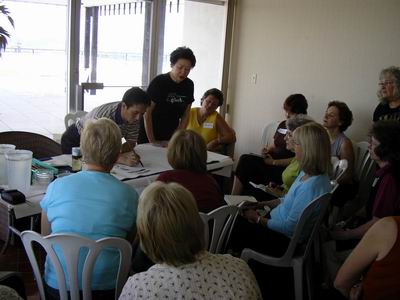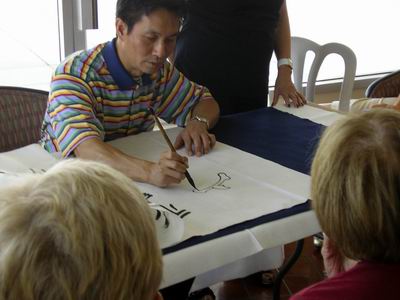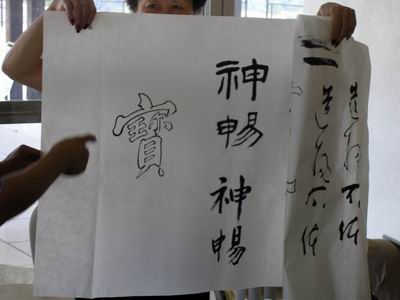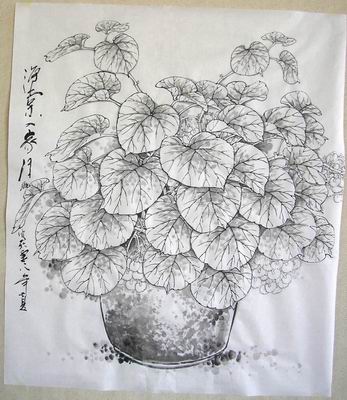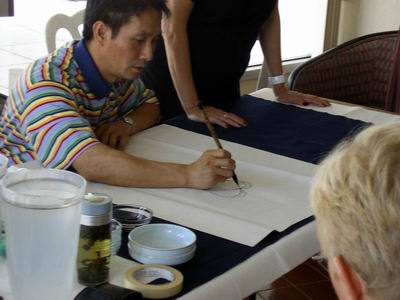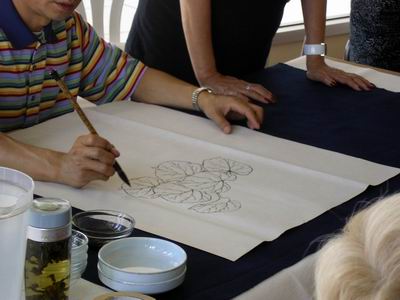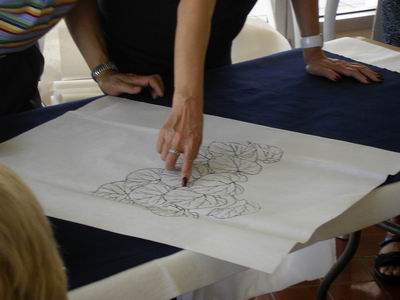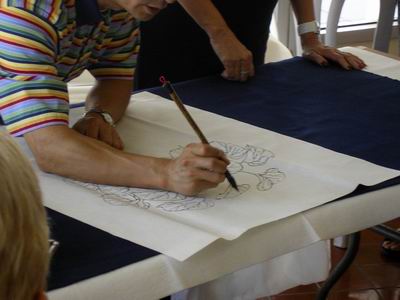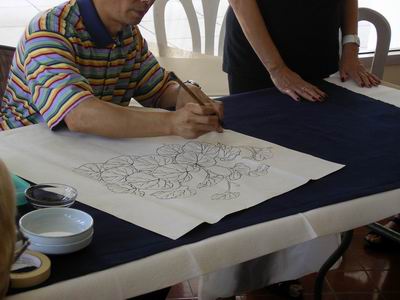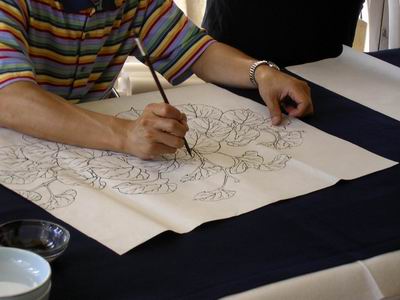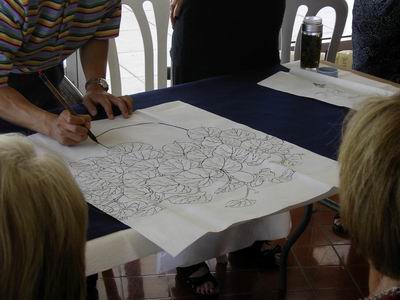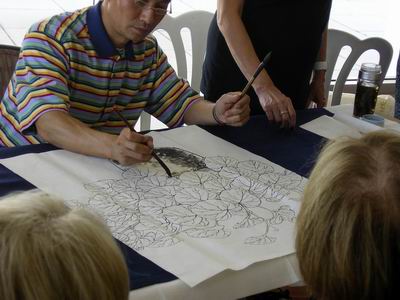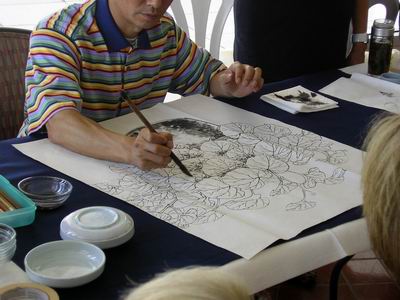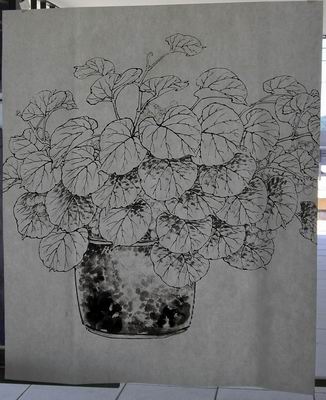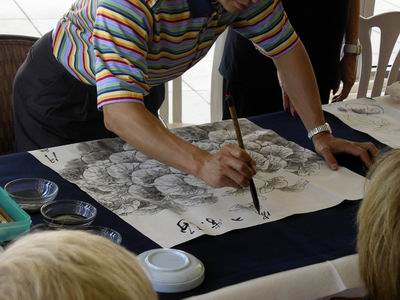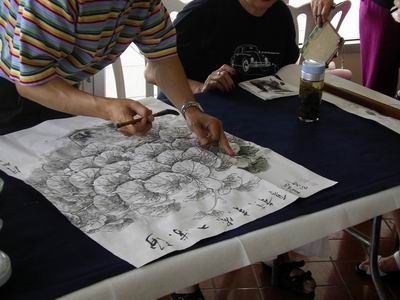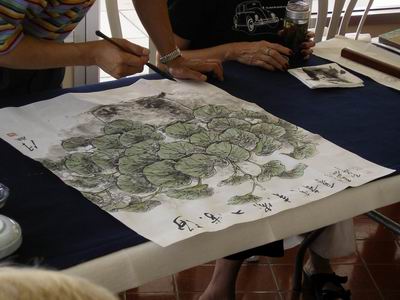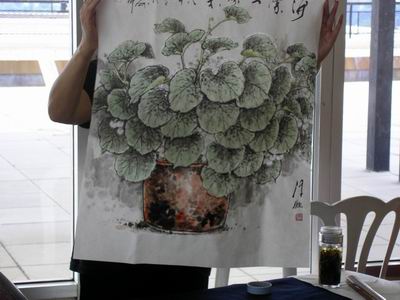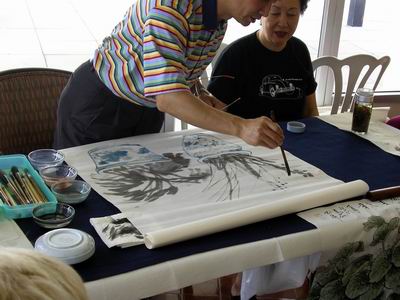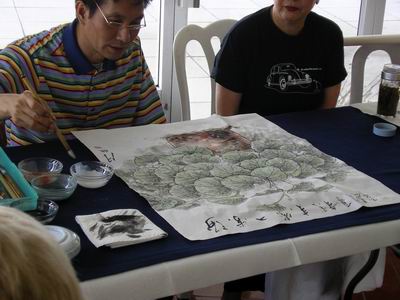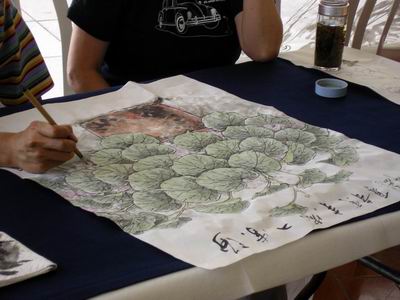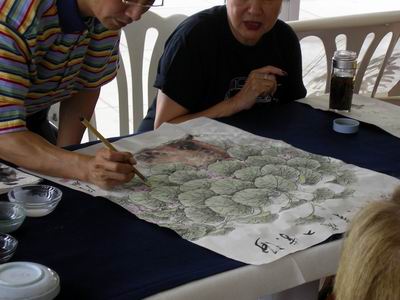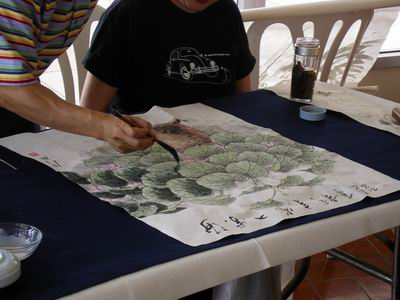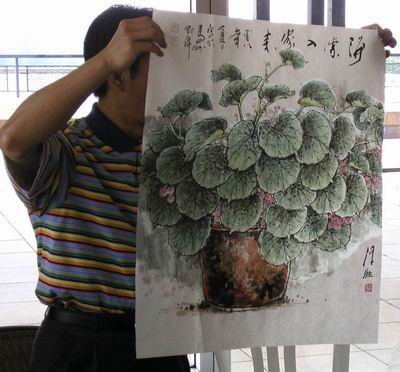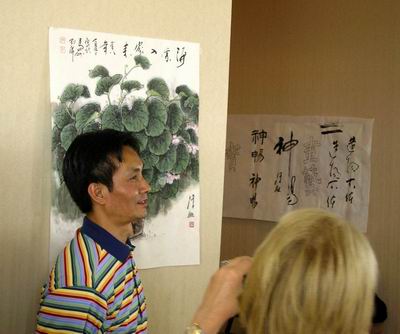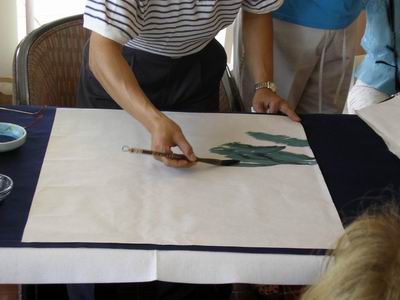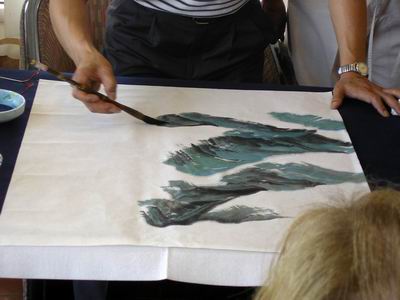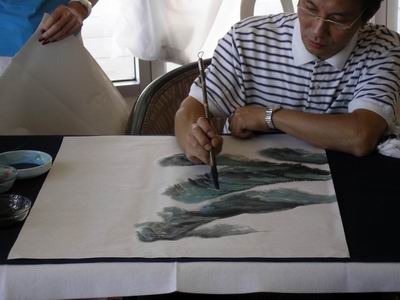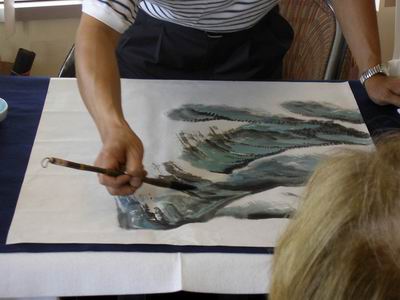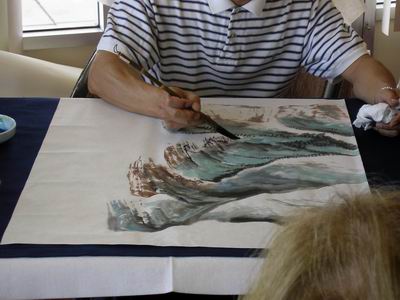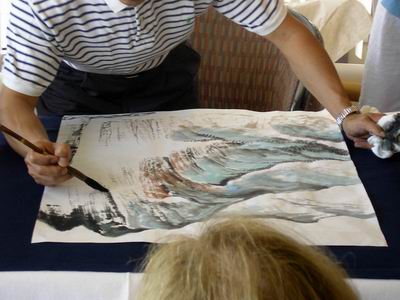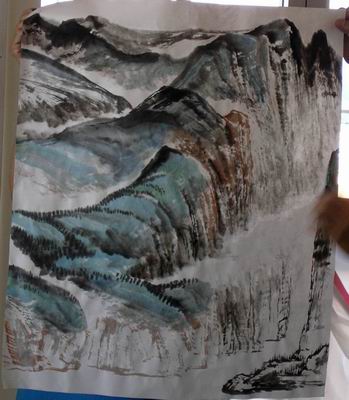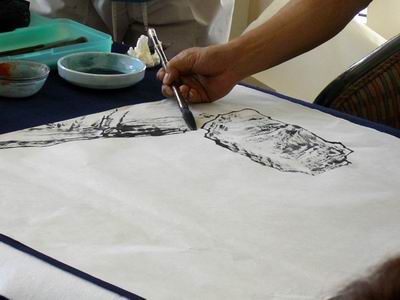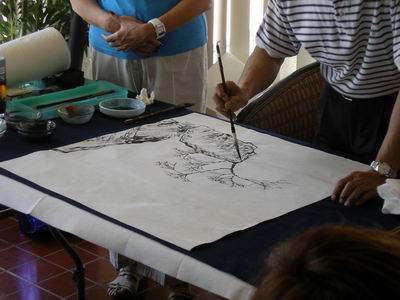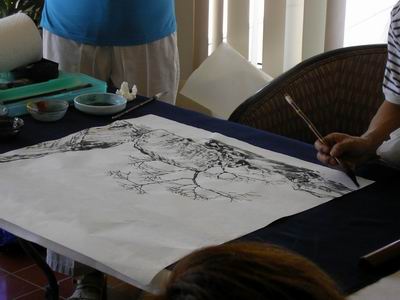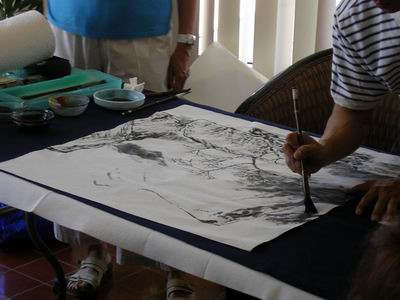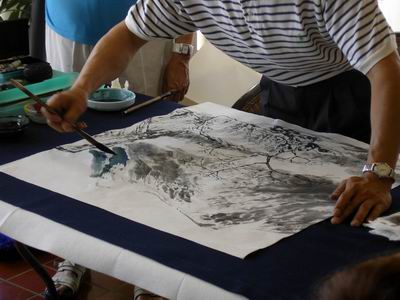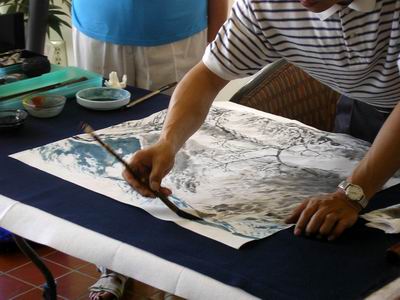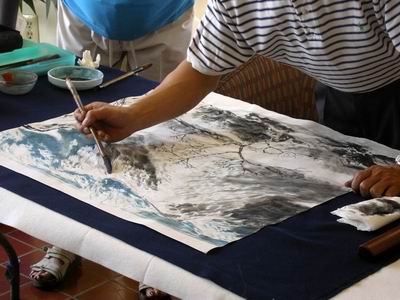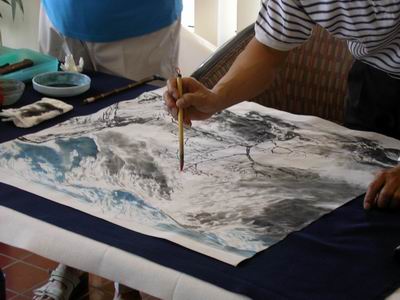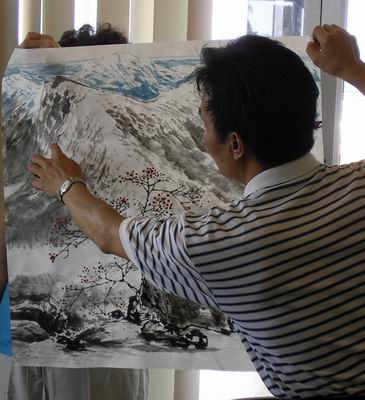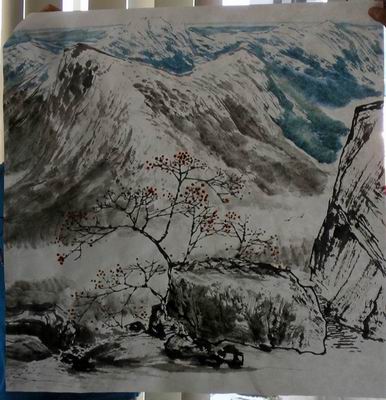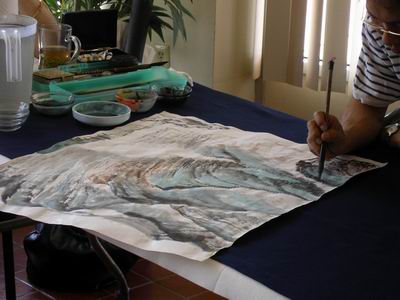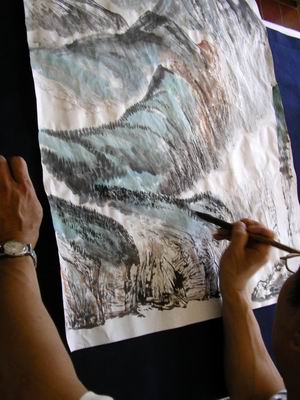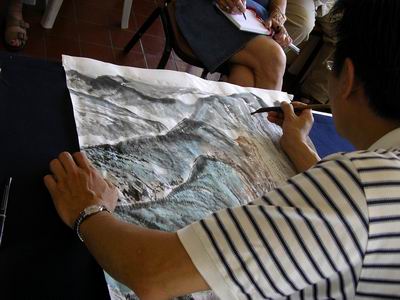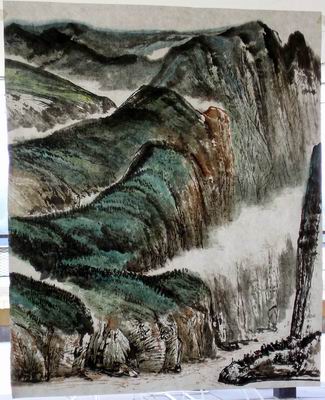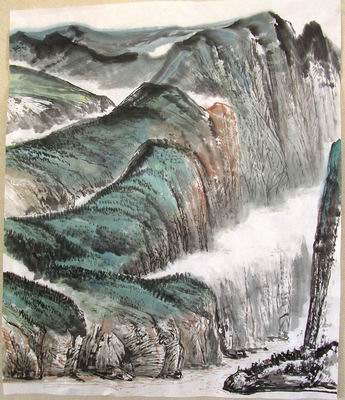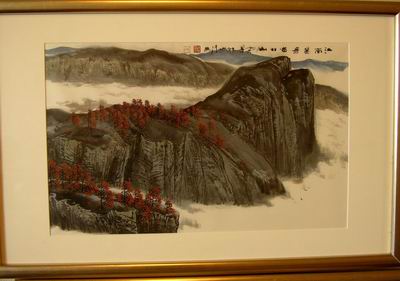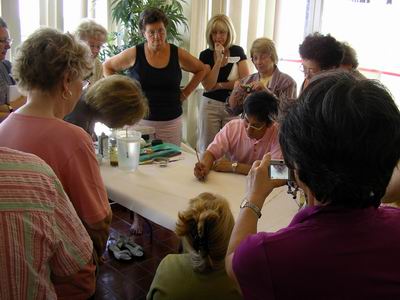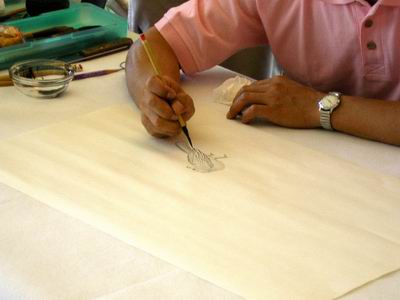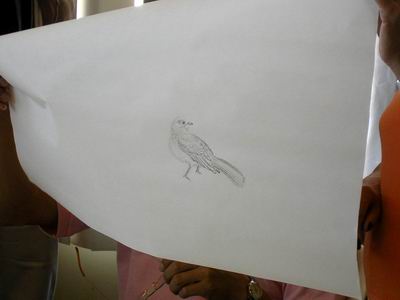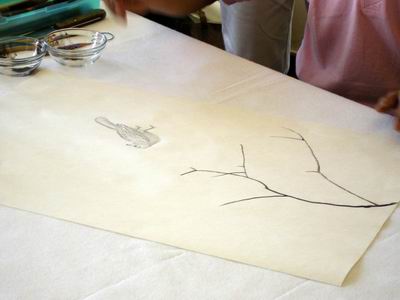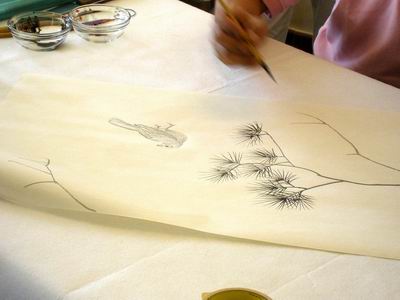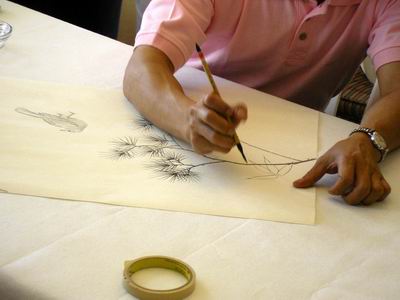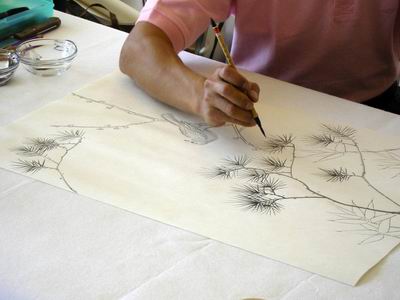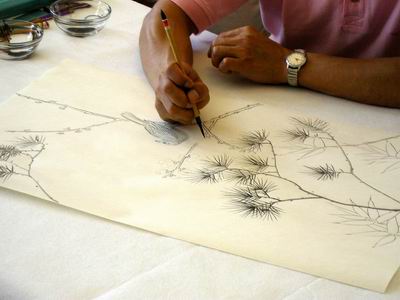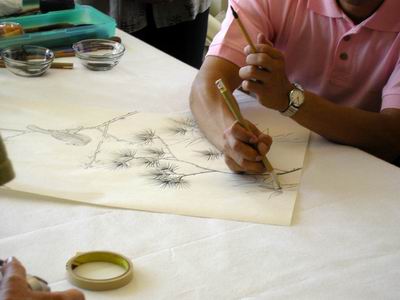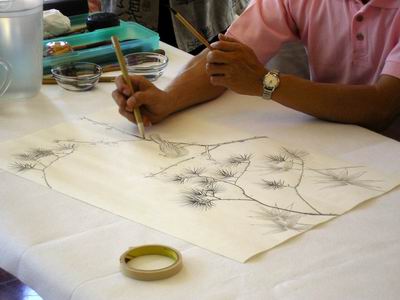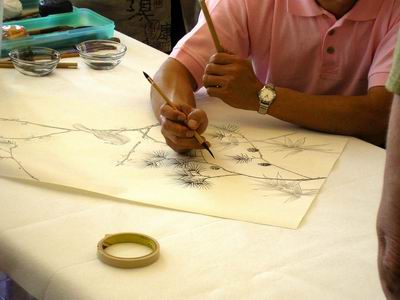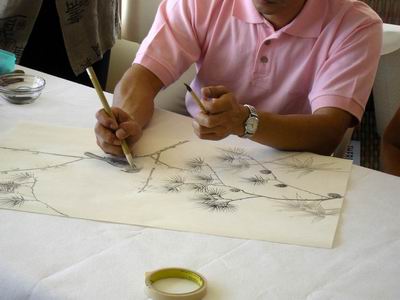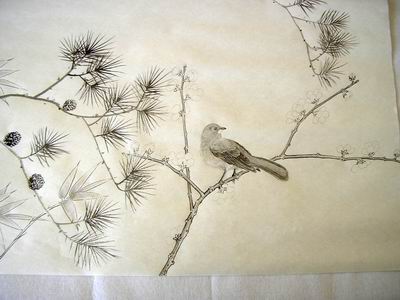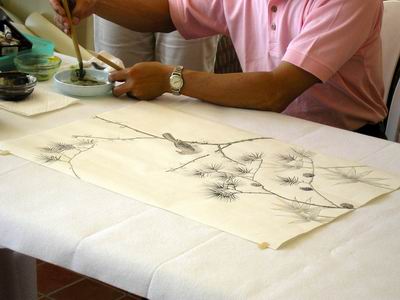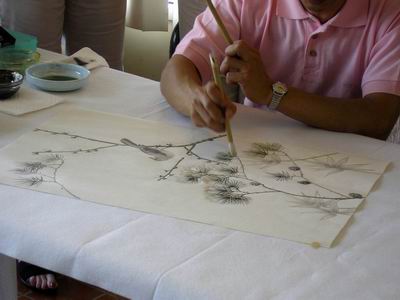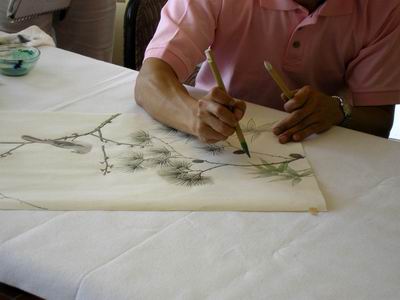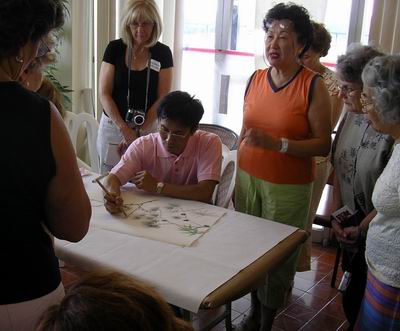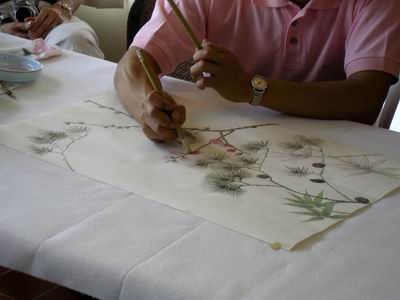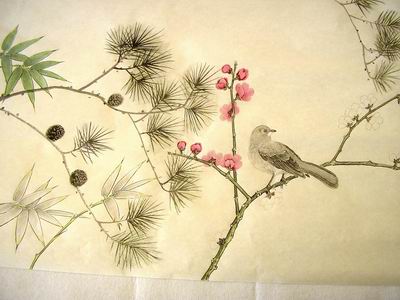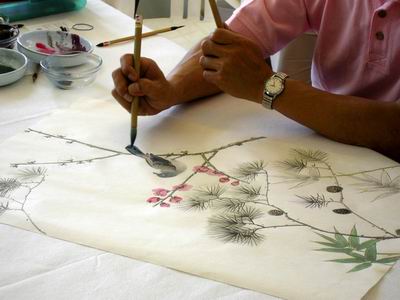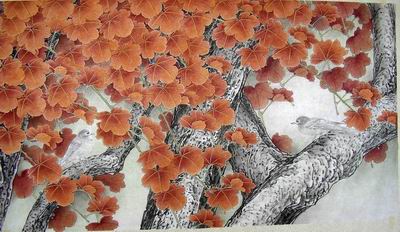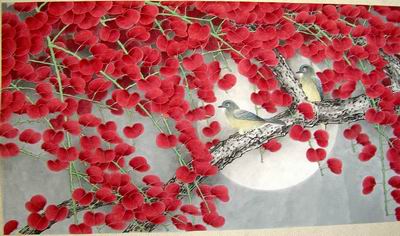Plants, Landscapes and Fine Line Painting with Liang Wei - July 17th, 18th and 19th, 2008
Imagine attending a three-day workshop that included the three styles used in sumi-e painting - detailed, free style and fine line - and taught by an artist, Liang Wei, who excels in them all. A few visiting Canadians, invited by the Sumi-e Society of America to discuss the 2009 international show, were fortunate enough to attend this workshop in Bethesda, Maryland. We left raving about Liang Wei's artistry, technique and his ability to communicate his craftsmanship to the workshop participants.
Liang Wei began, as many artists do, with calligraphy. Nellie Chao (the Best of Show winner at the Sumi-e Society of America's recent exhibition) would act as our interpreter throughout the workshop as Liang Wei worked on his paintings.
Liang Wei emphasized the close correlation between painting characters and using brush strokes in sumi-e painting.
As in painting, there are different approaches to calligraphy. You can outline the characters or you can write expressively in a free style.
Liang Wei then turned to the plant he would paint. A completed painting hung on the wall to indicate the design he would use.
The approach Liang Wei used was to create a detailed outline of the plant as shown with the first leaf.
Liang Wei, who works rapidly, soon added a collection of other leaves.
Stopping momentarily, Nellie Chao pointed to the elaborate interplay of the leaves.
Next some younger, unfolding leaves were added to the plant.
Several more of these unfolding leaves were drawn. The challenge of painting these younger, unfolding leaves is to express a twisted and turning leaf, which has a different underside.
Flowers were sketched in a light grey.
A vase completed the detailed outline.
Liang Wei began filling in the plant. He used dots to do this. One brush contained the sumi-e ink and the other contained only water. Using the two brush technique, he could get dark and light grey dots that added a third dimension to the work.
The technique continued with the leaves.
The result was a three-dimensional plant where leaves appeared layered with shading.
Liang Wei added his calligraphy.
In the next pass, Liang Wei added the colour starting with green for the leaves.
The rest of the leaves quickly followed. A large, thick brush was used with considerable colour.
The result brought the painting to life. A contrasting rust colour added to the vase offset the green to make an attractive composition to the eye.
While the first painting was drying, Liang Wei drew some free style plants in a few quick, bold strokes.
Returning to the first painting, the second layer of colour was added. Liang Wei told the workshop attendees that he adds as many layers as necessary to get the effect he wants.
The flowers were added in a light mauve colour.
Yellow was used on the flowers' stamens.
Then a darker green inked on the centres of the leaves created a deep green at the core of each leaf just as you would see in a real plant.
The initial plant now became more vivid. Note how Liang Wei coloured the underside of some leaves a lighter tone.
It was our turn to work on a plant for the rest of the afternoon. Yes, you do have to do some work at a workshop! Liang Wei helped us one-on-one, which was appreciated as we discovered (as workshop participants usually do) that it was more difficult to create this plant than we might have imagined when watching.
The next day switched to landscapes done in a free style. Liang Wei began with a large, thick brush using a bluish-grey colour with a tip of black ink. He used the side of the brush to layout the structure of the mountains.
Within a few minutes, the mountains took shape.
Trees in black were created with small, single strokes.
Another colour, brown, was introduced to some of the cliffs.
As he worked, Nellie Chao reminded the workshop participants that Liang Wei was leaving sections to separate the mountains and allow for other elements like mist and water.
To the far side of the landscape, dramatic cliffs in black ink were painted. Liag Wei created these cliffs in bold, sweeping strokes.
At this stage, the mountains, cliffs, and water, in the forefront, had been defined. Liang Wei put the painting aside to dry. He would return to it later in the day.
A second landscape was started by Liang Wei. This one highlighted an imposing rock structure in the foreground.
Liang Wei has an acute sense of composition while creating his paintings. He added this tree as a sharp contrast to the background providing a balance to the work.
Then the shoreline was extended.
The mountains were painted about the tree in a reversal of the first painting where the mountains were created first.
A blue tone was used on a more distant range of mountains.
Liang Wei extended these distant mountains across the painting.
The interplay of blue and black created a startling visual composition.
Bright red flowers were created with dots. They became a focal point to the work.
Liang Wei suggested that we create the face of the mountains with variations in grey to indicate both the rocky sides and shadow.
The completed painting contrasted the foreground - the tree, red petals and rocks - with the background - several ranges of mountains.
The industrious Liang Wei returned to his previous landscape that had dried leaving the colours in a softer shade.
Liang Wei enhanced the trees and added a few more rows of trees. Nellie Chao reminded the workshop participants that it was important to leave space between these rows.
Black ink provided more definition to the individual mountains.
The completed work was a dramatic and textured set of mountains with all the elements you would find in a natural landscape: cliffs, rocks, trees, water and mist in a mix of colours.
The next day, after the work dried, revealed the painting in softer colours.
Liang Wei had brought a framed landscape to the workshop It help us as we turned our hands to painting landscapes for the rest of the afternoon. Liang Wei and Nellie Chao provided assistance on where we could improve on landscape painting ourselves.
Our final day was spent learning about fine line painting. Fine line painting is very different from the traditional approach used in the previous days. Fine line painting requires using non-absorbent paper.
Fine line painting means painting in small, detailed strokes. It is very time consuming. Fine line was recommended by Liang Wei for those who want to improve their patience!
The bird, which would be the focal point of Liang Wei's work, was the first element of the painting he worked on. Every feather and the detailed layering of feathers was created in painstaking, small steady strokes.
Then branches were added to the painting to complement the bird.
Using quick strokes, pine needles suddenly appeared.
Then Liang Wei outlined bamboo leaves.
Another branch was added for the bird itself.
Liang Wei outlined the calyxes and flowers on this branch.
At this point the detailed outlining for the painting. Liang Wei turned to the shading, first in black ink. Like the technique he used in the first day, Liang Wei used two brushes, one with the black ink and the other with water.
Using the two brushes, he would add the ink first and then use water to spread the ink. The result was a natural effect showing appropriate light and dark sections.
Acorns were added around the pine needles.
The bird received similar shading.
The painting in black and white was complete at this point.
Liang Wei turned to adding the colour, beginning with green.
A wash of light green was added to the pine cones.
The bamboo leaves came next.
Nellie Chao explained the types of colour Liang Wei was mixing to get the effect he wanted. Liang Wei uses simple, affordable paints, typically Marie's water colours. He would add the paint about the edge of a bowl and then touch it with the brush and then splash the brush in the water.
The flowers were added in a rose colour.
The painting at this point would have been complete for most of us.
Liang Wei is a perfectionist, however. He returned to add a layer of blue-grey ink to the bird.
Now it was our turn to practice fine line painting and exhibit some of the patience needed for this technique! A completed fine line painting brought to the workshop by Liang Wei showed a pair of birds in a tree surrounded by autumn leaves.
Another painting had a pair of birds in a moonlight setting surrounded by red leaves.
We could have stayed for three more days with this impressive painter and instructor!
